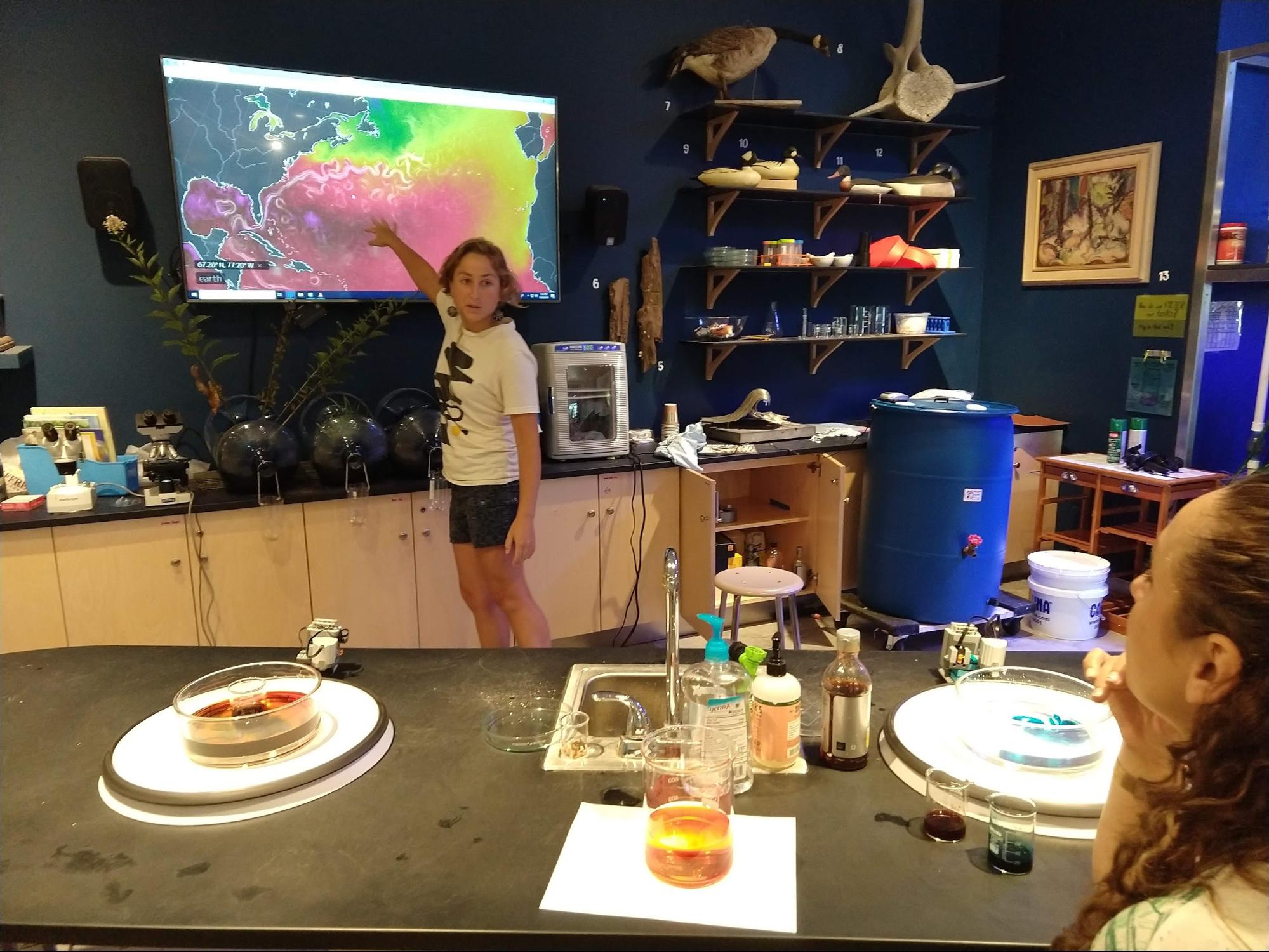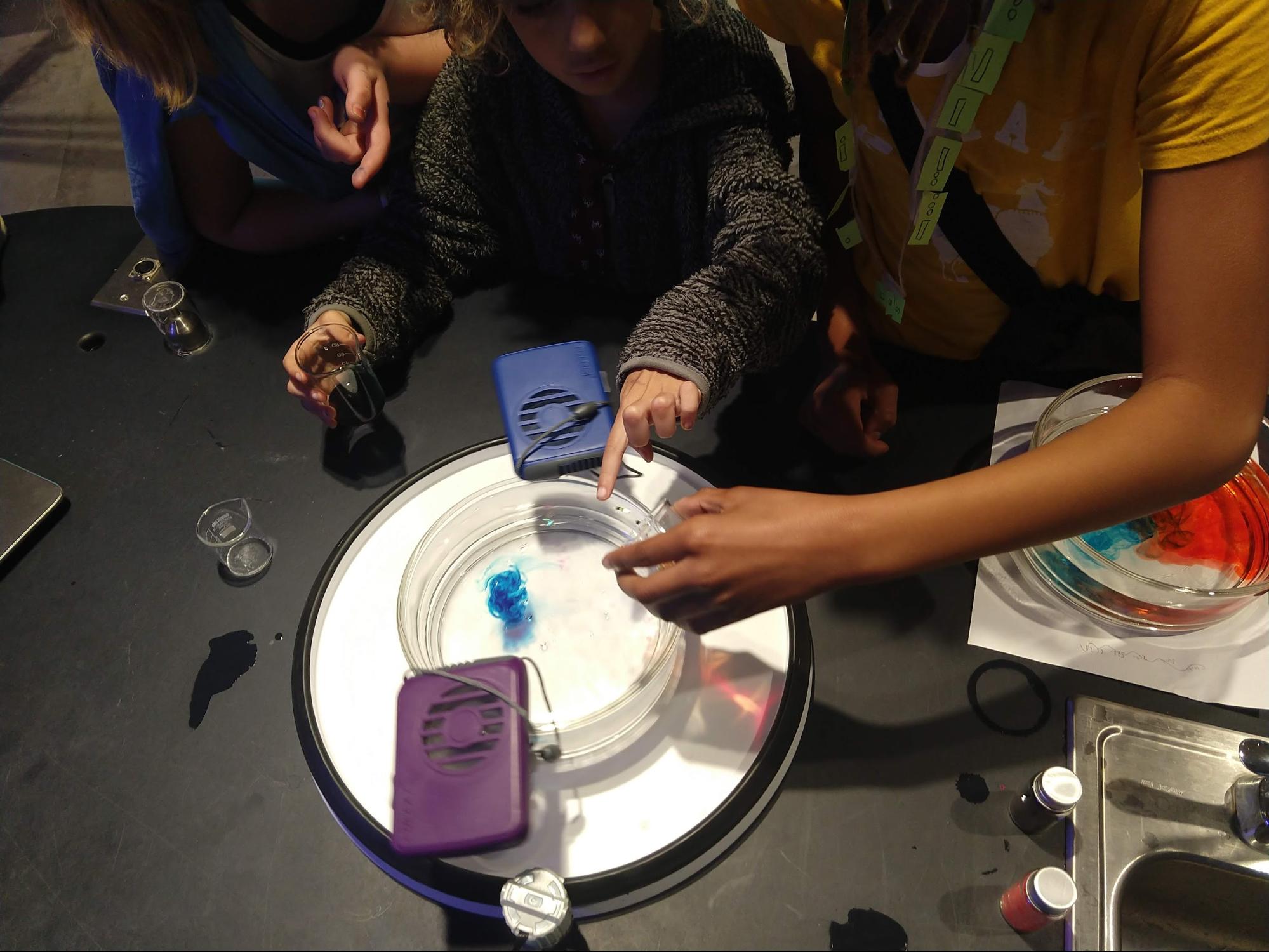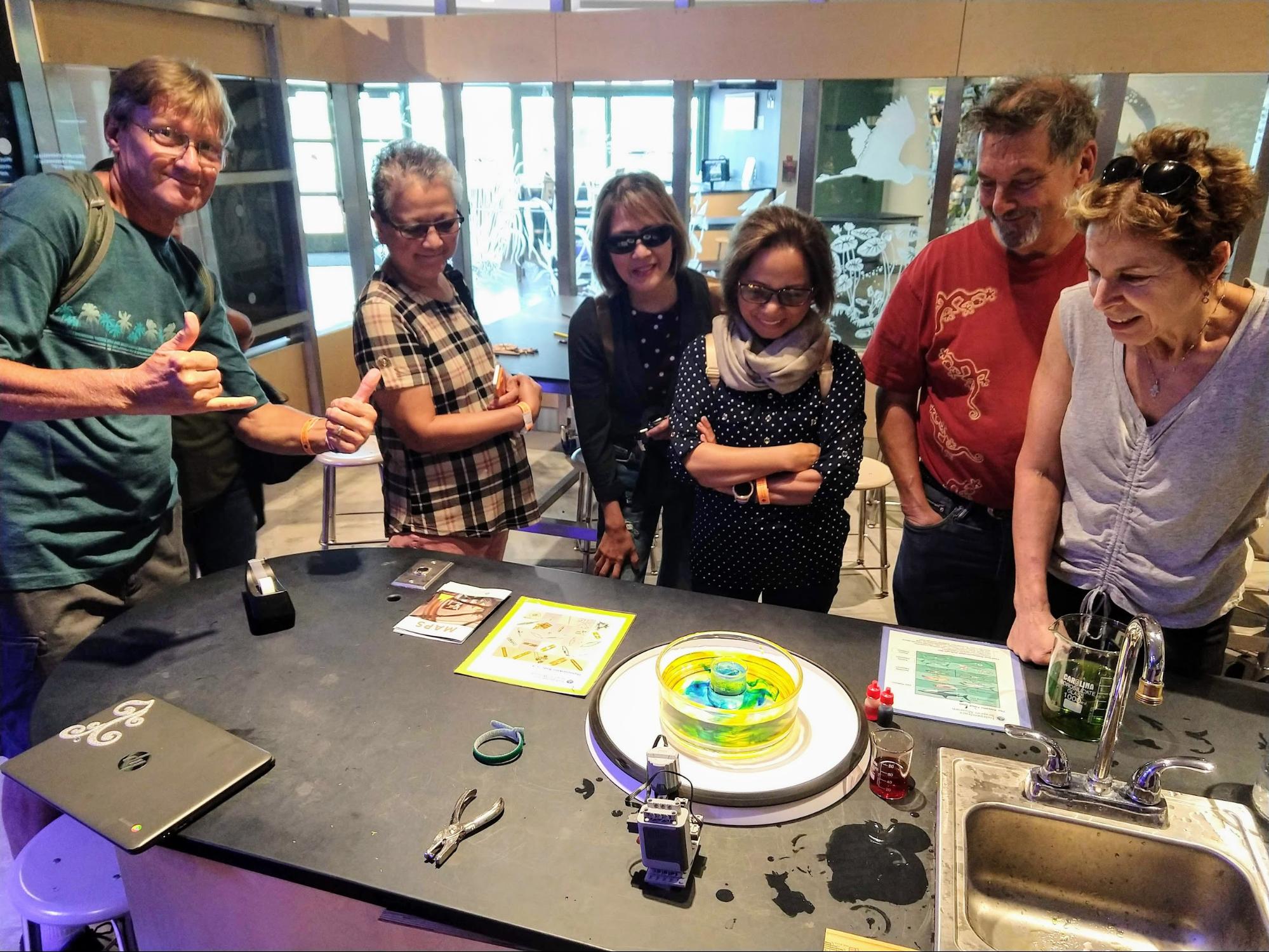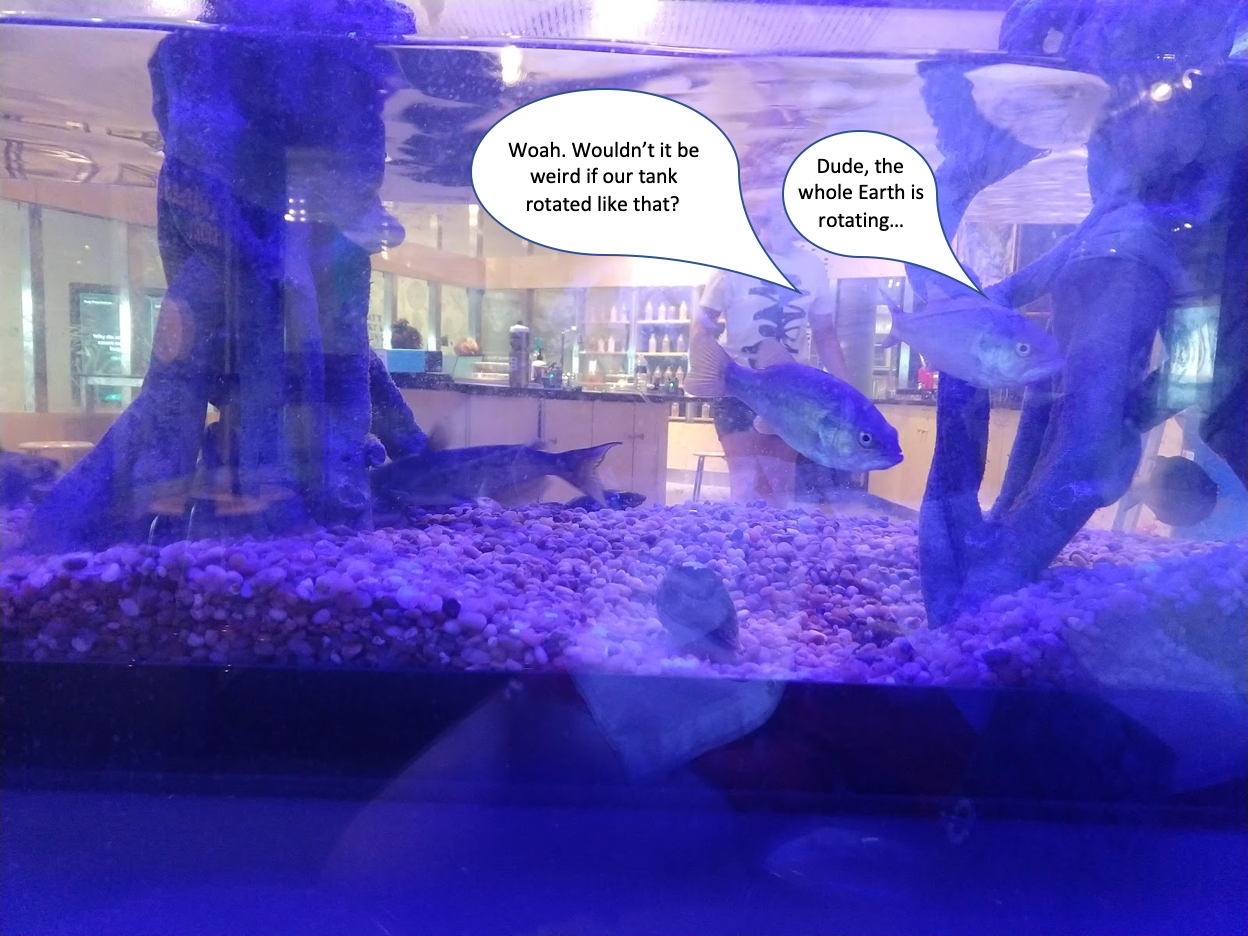- Mon 05 August 2019
- Field Reports
- Abigale Wyatt
- #field-reports, #guest-author, #outreach, #public
[Note: This post is part of a new series we’ve started, Field Reports, where students, teachers, and other DIYnamicists tell us (and you) in their own words how they are using DIYnamics in their schools and communities. -Spencer]

Outside the Independence Seaport Museum, situated right on the Delaware River in Philadelphia, PA.
Saturdays are for science at the Independence Seaport Museum in Philadelphia! A group of Princeton PhD students, Abigale Wyatt, Allison Hogikyan and Tsung-Lin Hsieh, from the Geosciences department and Atmosphere and Ocean Sciences program have been visiting the museum regularly to give demonstrations using the DIYnamics table.

Allison using nullschool.net to talk to visitors about how our demonstrations correlate to real-time ocean and atmosphere circulations.
Within the recently opened exhibit “River Alive” that emphasizes how local Philadelphians are impacted by and affect the Delaware River, is the “Fisharium,” a perfect lab for demos using the rotating tank set up. The space comes with a lab bench, faucet, and some friendly fish to keep us company. Using velcro to stabilize the lego motor allows us to quickly set up two rotating tanks and a stationary beaker to demonstrate the impact of rotation on water’s motion.

Visitors to the museum come in all shapes and sizes. This group of adults was fascinated by the baroclinic instability experiment that demonstrates how rotation plus a temperature difference can generate unique physical structure.
The museum’s interest is in all things sea-related, including exhibits on boat making, US Naval history and even a new tattoo exhibit. It’s a great space to engage with local visitors about science in a casual environment. Our table is also a nice addition to the museum’s already diverse biology experiments and provides an opportunity for anyone to ask about our current research. The setting is perfect for both solo visitors and large groups, giving us space to adjust for everyone to have a fully hands on experience.

A group of visiting Girl Scouts stops by our table to talk about ocean circulation. After watching the dye spread and diffuse in the still tank on the right, they’re taking turns adding dye to the rotating beaker.
It has been a great opportunity for us to chat with the public about our science and hone our scicomm skills. We’ll be continuing our collaboration with the museum into the next school year so if you’re in the Philadelphia area on a Saturday afternoon, come check us out!

The “Fisharium” fish watching over the rotating fluid experiments.
